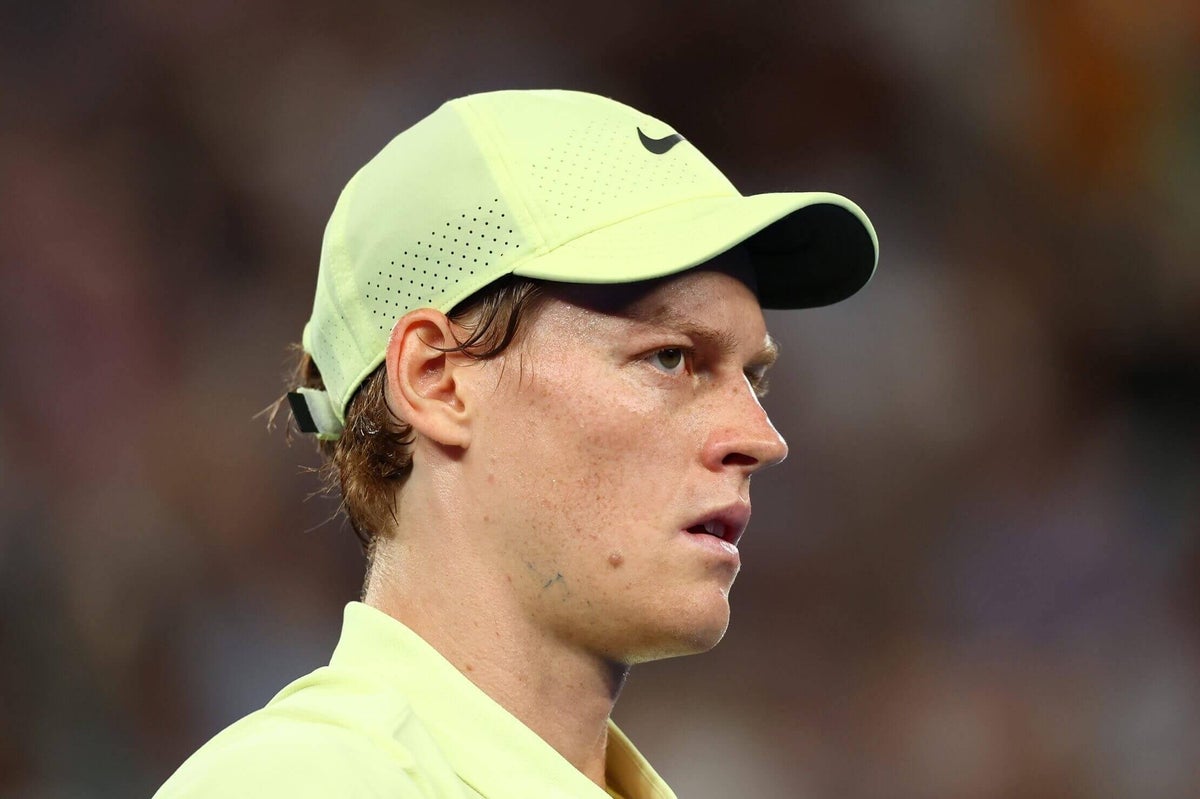Jannik Sinner, the world’s No 1 male tennis player, has accepted a three-month ban from the sport following an anti-doping rule violation.
Australian Open champion Sinner, 23, received a sanction in August but was found by the International Tennis Integrity Agency (ITIA) to bear “no fault or negligence” for two positive tests for clostebol, a banned anabolic steroid, in March and was permitted to continue playing.
The World Anti-Doping Agency (WADA) appealed against that ruling in September with the Court of Arbitration for Sport (CAS) having set a hearing date for April.
However, WADA confirmed on Saturday it had now entered a case resolution agreement with the Italian.
He will now be ineligible to compete until May 4 but will be available to return in time for the second Grand Slam of the year, the French Open, later that month. Sinner will be allowed to train from April 13.
“WADA accepts the athlete’s explanation for the cause of the violation as outlined in the first instance decision,” a statement read. “WADA accepts that Mr. Sinner did not intend to cheat, and that his exposure to clostebol did not provide any performance-enhancing benefit and took place without his knowledge as the result of negligence of members of his entourage.
“However, under the Code and by virtue of CAS precedent, an athlete bears responsibility for the entourage’s negligence. Based on the unique set of facts of this case, a three-month suspension is deemed to be an appropriate outcome.
“As previously stated, WADA did not seek a disqualification of any results, save that which was previously imposed by the tribunal of first instance. The International Tennis Federation and International Tennis Integrity Agency, both co-respondents to WADA’s CAS appeal, neither of which appealed the first-instance decision, both accepted the case resolution agreement. ”
Sinner tested positive for clostebol on two occasions in March, in-competition at the BNP Paribas Open held in Indian Wells and out of competition eight days later.
He was stripped of the ranking points and prize money he won for taking victory in Indian Wells but was allowed to continue competing.
Sinner had said he was “surprised” by WADA’s decision to appeal and had continued playing with the doping allegations hanging over him ever since including in Melbourne last month, winning the tournament with victory over Alexander Zverev in the final.
An independent tribunal convened by the ITIA and conducted by Sports Resolutions in August accepted Sinner’s explanation that his physiotherapist, Umberto Ferrara, had brought an over-the-counter healing spray containing clostebol to Indian Wells.
His trainer, physiotherapist, Giacomo Naldi, cut his hand, and then used the spray on that cut. Naldi then conducted massages on Sinner, which led to transdermal contamination with the clostebol from the healing spray.
Sinner parted company with both Naldi and Ferrara on the eve of the U.S. Open, which he went on to win by beating Taylor Fritz in the final.
‘Timing of ban a positive for Sinner’
Analysis from Charlie Eccleshare
The common consensus was that Sinner was likely to get a ban of around this length, but given there was the threat of a two-year suspension this is a positive outcome for the world No 1.
Especially as, with the CAS hearing scheduled for mid-April, the expectation was that a three-month ban would take Sinner out of the French Open and Wimbledon, and leave him likely undercooked for the U.S Open. In effect wiping out the rest of his Grand Slam year.
Instead Sinner will miss no majors, and be back a few weeks before the French Open — returning in time in fact for his home event, the Italian Open, which he missed through injury last year.
These benefits will no doubt add to the sense from some fellow players and tennis insiders and watchers that Sinner has been dealt with leniently (there were numerous complaints at the time his original positive tests were revealed in August). As ever, due process has been followed, but tennis is such an inherently two-tiered sport that tensions like these are always lurking just below the surface.
For Sinner, almost a year of uncertainty is over, and though he’ll miss big events like Indian Wells and Miami, he will be free to compete again in early May with, theoretically at least, all of this behind him.
(Graham Denholm/Getty Images)

